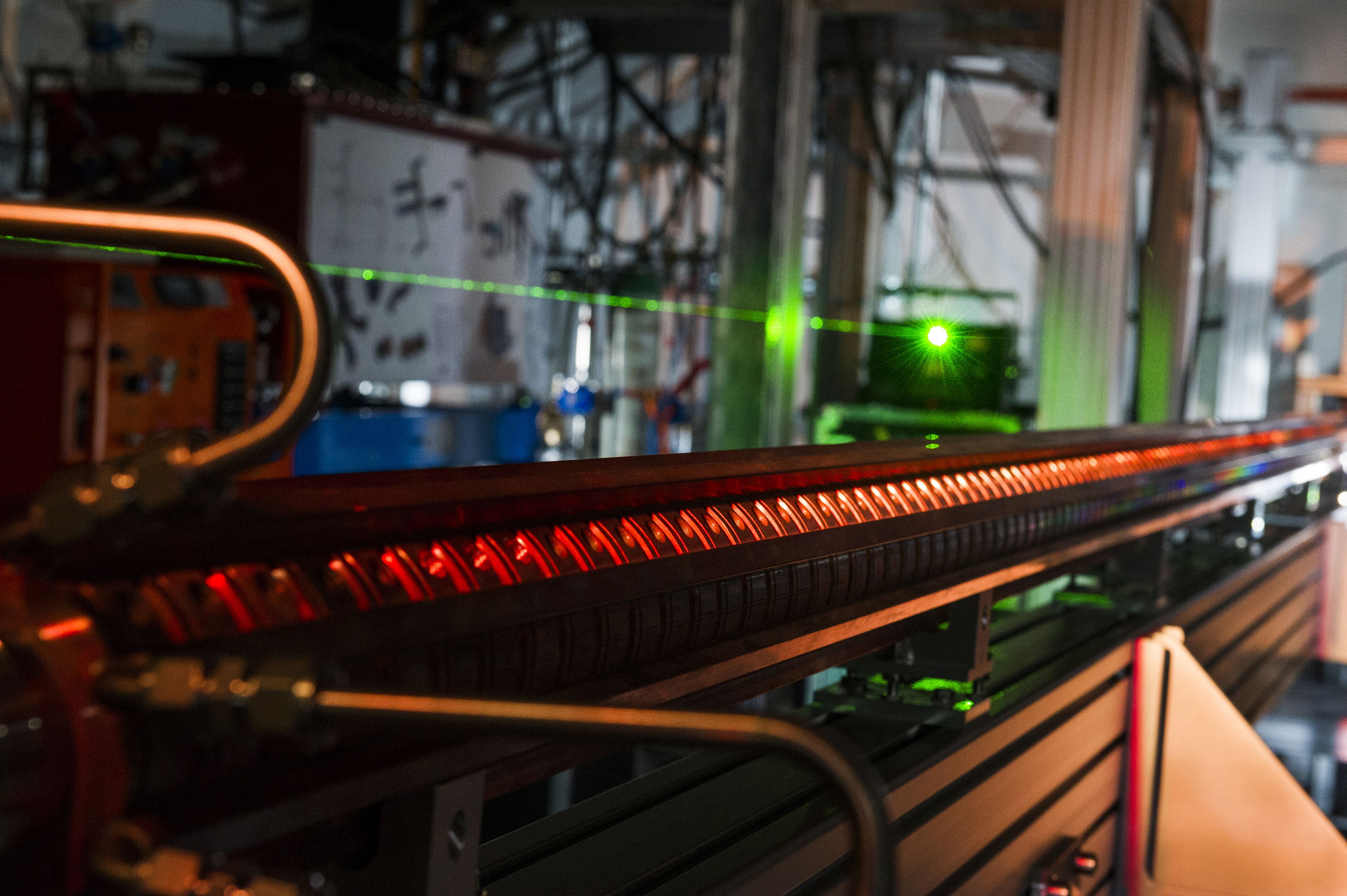Research Facility 2.0 (RF 2.0) is an EU-funded research project aimed at making the operation of particle accelerators and other large-scale facilities more resource-efficient. Since the beginning of the year, ten European project partners coordinated by Karlsruhe Institute of Technology (KIT), have been working on optimized components and digital solutions to reduce the energy consumption of accelerator systems. The European Commission (Horizon Europe program), and the Swiss State Secretariat for Education, Research and Innovation are funding the project with a total of EUR 5.6 million over three years. The KITTEN test center at KIT plays a central role in the RF 2.0 project: It hosts researchers that are working on the analysis of important parameters and the development of realistic demonstrators.
Particle accelerators not only play an important role in numerous fields of research. Thousands of such accelerators are in use worldwide for industrial and medical applications, for example in material testing or radiotherapy. These high-performance facilities are real energy guzzlers: The annual energy consumption of large plants often amounts to several hundred gigawatt hours (GWh). This compares to the energy consumption of small- or medium-sized European cities. Previous approaches targeted reducing energy consumption and the carbon footprint of particle accelerators or using more sustainable materials, but were limited to specific technical issues. The RF 2.0 project, in contrast, uses a comprehensive approach to making particle accelerators more energy-efficient.
The Objective: Operating Accelerators with Renewable Energies
“We bring expertise in physics and energy technology together. It is our vision to operate particle accelerators safely, stably, and with nothing but renewable energy, to make them as independent as possible from the public power grid and create less impact on the environment,” says Professor Giovanni De Carne from the Institute for Technical Physics at KIT. De Carne is the RF 2.0 project coordinator and initiated the project together with Professor Anke-Susanne Müller, Head of the Institute for Beam Physics and Technology (IBPT) at KIT. A total of ten partners are working together on RF 2.0, including five of the largest particle accelerator facilities in Europe – ALBA Synchrotron (Spain), CERN, Deutsches Elektronen-Synchrotron DESY in Hamburg, Helmholtz-Zentrum Berlin, and MAX IV Laboratory (Sweden) – supported by specialized technology companies.
Realistic Tests with a View to Energy Efficiency and Grid Stability
A key element of the project is the KITTEN test center. The acronym stands for “KIT Testfeld für Energieeffizienz und Netzstabilität in großen Forschungsinfrastrukturen” (KIT test field for energy efficiency and network stability in large-scale research infrastructures). KITTEN integrates the KARA research accelerator and the Energy Lab at KIT. “This infrastructure enables us to create a real-life environment for investigating and testing energy efficiency and network stability in large-scale research infrastructures,” says De Carne. The analysis phase is currently underway. “Particle accelerators always require a very high, constant power supply that must be free from interference. This challenge could not be met in terms of voltage qualities so far due to a lack of flexibility. We use our tests to get a deeper understanding of correlations, create mitigation strategies (i.e. approaches to reduce negative effects and lower the projected costs), analyze the CO2 footprint of the equipment, and create a sustainability matrix.”
Building on the results, the elaboration of solutions for more energy-saving technologies with better efficiency is on the agenda. The focus is on four areas: new, highly efficient components; implementation of digital solutions for optimized operating periods, faster start-up and shutdown processes for improved design and operation; integration of low-carbon technologies by using renewable energies and energy storage systems as well as higher energy consumption flexibility through dynamic monitoring and control systems.
More Efficiency Thanks to Artificial Intelligence (AI) and Digital Twins
Demonstrator projects conducted in cooperation with the project partners help the research team to test and validate specific approaches under realistic conditions. “For example, we are working on AI-based solutions for more efficient and flexible operation of accelerators. We are further developing a digital twin that will enable us to validate new energy technologies faster in the future,” De Carne explains. One of the projects will tackle the flexibilization of data centers to better accommodate the fluctuation in the yields from renewable energies. Another project is aimed at testing measurement systems that detect disruptions in the grid and enable faster reactions to such fluctuations.
“All of these research activities are clearly transfer-oriented,” says De Carne. “The involved technology companies seek to develop market-ready products from the solutions we are working on together.” The range of possible applications is not limited to particle accelerators for research purposes. “Other areas that consume much energy will also benefit from our concepts – be it MRT equipment in hospitals, heavy industry plants for steel and cement production, or data centers that can be operated with more energy efficiency.”
The Next Milestone: KARA Dashboard Makes Results Freely Accessible
Currently, De Carne and his team are developing an open dashboard for the Karlsruhe research accelerator. Its goal is to make the data and results obtained accessible to external researchers and developers in the best possible way. They will not only see the energy consumption of the accelerator and the CO2 footprint in real-time, but also the effects of the alternative solutions tested.
Being “The Research University in the Helmholtz Association”, KIT creates and imparts knowledge for the society and the environment. It is the objective to make significant contributions to the global challenges in the fields of energy, mobility, and information. For this, about 10,000 employees cooperate in a broad range of disciplines in natural sciences, engineering sciences, economics, and the humanities and social sciences. KIT prepares its 22,800 students for responsible tasks in society, industry, and science by offering research-based study programs. Innovation efforts at KIT build a bridge between important scientific findings and their application for the benefit of society, economic prosperity, and the preservation of our natural basis of life. KIT is one of the German universities of excellence.

